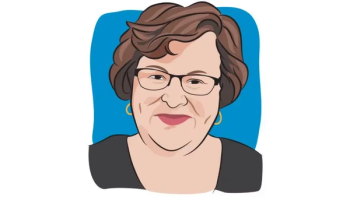
Libtayo’s Approval Part of the ‘Renaissance’ of Lung Cancer Advancements
The recent FDA approval of Libtayo for advanced non-small cell lung cancer added yet another option for the treatment of patients with the disease.
In recent years, there has been a “renaissance of therapies,” for the treatment of lung cancer, especially with the addition of immunotherapy and targeted treatments, according to Dr. Edward Kim, who is the physician in chief at City of Hope, Orange County and vice physician in chief at the City of Hope National Medical Center.
The latest addition to the lung cancer space is the Food and Drug Administration’s (FDA)
Libtayo is an immunotherapy agent that targets PD-1, a receptor on a type of white blood cells called T cells. When functioning normally, T cells are able to find and kill cancer and infections, but when PD-1 attaches to them, they become inactive and unable to fight disease. So by binding to and blocking PD-1, Libtayo allows the T cells to continue to attack cancer.
However, Libtayo is not the only checkpoint inhibitor used for the treatment of NSCLC — with drugs like Keytruda (pembrolizumab), Opdivo (nivolumab) and Yervoy (ipilimumab) also approved in the space, patients have more treatment options than ever before.
“We as clinicians — and certainly patients — love having the opportunity that there are multiple effective options,” Kim said in an interview with CURE®, reflecting on when he started treating patients with lung cancer over 20 years ago.
Back then, the only options were chemotherapy combinations, which did not improve survival much and often came with terrible side effects, from nausea to taste changes and hair loss. Now, there are immunotherapy drugs and tyrosine kinase inhibitors that target specific biomarkers in individual cancer types.
“Although it may seem like … we already have treatment in that area with immunotherapy (drugs), competition and choices open up more opportunities for patients,” Kim said.
With more options in the space, patients can discuss side effect profiles to help determine which regimen is best. On a broader level, Kim also mentioned that more competition for the lung cancer market may also help drive down drug prices.
“I think it’s a win-win when we have more innovation and more choices,” Kim said. “I don’t think there will be a head-to-head trial (of the treatment choices), nor do I think we need a head-to-head trial, because there will be other different combinations of treatment that hopefully will utilize less chemotherapy and more biologic therapy with similar or better outcomes,” he said.
Looking ahead, Kim said that while lung cancer treatment has come a long way, there is still more that needs to be done.
“(The year) 2022 has continued the momentum of precision and personalized medicine,” he said. “We welcomed more biomarker-based targeted therapies,” he said. “We still have lots of work to do. … We need to figure out why are people at risk (for) getting lung cancer who don’t have smoking histories? We know there is a major fraction of patients with lung cancer who don’t smoke who have these driver mutations. What do we do to help them, I think there are going to be more studies that hopefully enlighten us.”
For more news on cancer updates, research and education, don’t forget to




